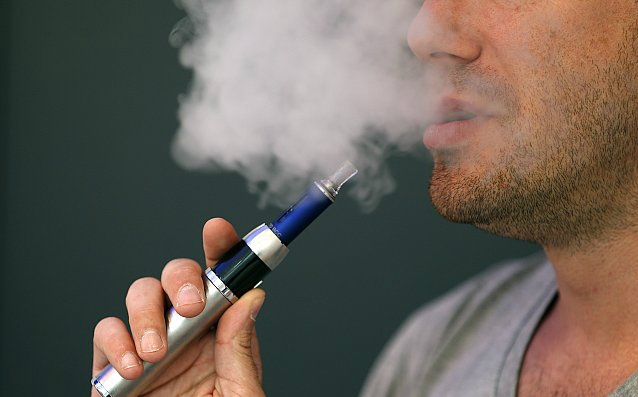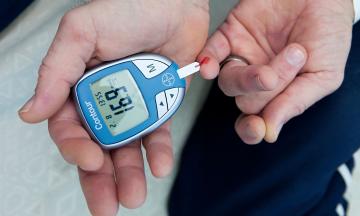
In the Andes Mountains of Peru, living in extreme poverty, Filomena Taipe Mendoza, 116 years old, is in the running to become the world’s oldest living person.
If her claim proves to be true, it would make her three months older than Misao Okawa of Japan, who currently holds the record for the oldest living person according to Guinness World Records and the Gerontology Research Group.
Mrs. Mendoza lives in the tiny village of Huancavelica, one of the poorest cities in Peru. Her age was reportedly discovered when she left her village to pick up a new type of retirement check for seniors living in poverty. BBC News reports that Peru’s National Identity Register claims that her ID card indicates that she was born on December 20, 1897.
“I am not of the past century, young man, but the other one… I am very old,” she told an official accompanying her to cash her first check according to Agence France-Presse (AFP).
Eat From the Garden, Don’t Eat Processed Food
What is Filomena Taipe Mendoza’s secret to such a long life? According to BBC News, she attributes it to the following:
- Eating a natural diet of potatoes, goat meat, sheep’s milk, goat cheese and beans
- Cooking only items she grows from her own garden
- Never eating processed foods
While we wait for officials from Guinness World Records and the Gerontology Research Group to verify Mrs. Mendoza’s claim, we can take this opportunity to spotlight the rare group of individuals known as supercentenarians in order to learn their secrets for living long and healthy lives.
Supercentenarians are the elite group of people who have reached the 110-year milestone. According to the Gerontology Research Group (GRG), there are 74 verified living supercentenarians in the world and 71 of them are female. The GRG reports that there are probably hundreds more supercentenarians that have yet to be verified.
Lots of Sushi and Lots of Sleep
Leading the pack is Misao Okawa. According to Guinness World Records, she is the current verified oldest living person at 116 years and 64 days. She was born on March 5, 1898, at a time when Queen Victoria was still on the throne.
She resides in Osaka with her two daughters, one son, four grandchildren, and six great grandchildren.
So what is Misao Okawa’s secret to longevity? Guinness World Records reports that she attributes it to the following diet and lifestyle:
- Three large meals a day
- Eight hours of sleep a night
- Lots of sushi
Misao Okawa’s advice is rather simple. “Eat and sleep and you will live a long time,” she said in an interview to The Telegraph, “You have to learn to relax.”
In addition to her regimen of sleep and sushi, Mrs. Okawa maintains a healthy lifestyle of physical activity. The Telegraph recounts one remarkable story of her strength of body and character. When she was 102, she fell and broke her leg. After returning to the nursing home from the hospital, she was seen doing leg squats to help herself recover.
Mrs. Okawa is a prime example of Japan’s healthy aging citizens. According to the GRG, Japan boasts the highest population of verified supercentenarians in the world.
In John Robbin’s book Healthy at 100, he talks about the specific group of centenarians in Okinawa, Japan, the place where more people live to 100 than anywhere else in the world. In fact, fifteen percent of the world’s documented supercentenarians live in Okinawa. In his book Robbins describes the Okinawan Centenarian Study, which researched human longevity from a group of over 900 centenarians.
The study found that, first, genetics was an important factor for longevity. In addition to genetics, cultural habits such as hara hachi bu (eating only until being 80 percent full) and the maintenance of a healthy lifestyle by keeping physically active were key reasons that Okinawans retained remarkable health.
While Misao Okawa is the oldest living person, she does not hold the record for being the oldest person ever recorded. That title goes to France’s Jeanne Calment according to Guinness World Records. Mrs. Calment died on August 4, 1997 at the impressive age of 122.
Eat Two Pounds of Chocolate and Take Up Fencing
Jeanne Calment was born in February 21, 1875, in Arles, France. Her date of birth falls one year before Alexander Graham Bell patented the telephone.
In her New York Times obituary, it recounts how in her preteens she met Vincent Van Gogh, describing him later as ”very ugly, ungracious, impolite, sick — I forgive him, they called him loco.”
Her secret to staying young as reported in her obituary was a most unconventional list of diet and lifestyle habits:
- Drinking Port wine
- Eating two pounds of chocolate per week
- Treating her skin with olive oil
- Taking up fencing at 85
- Riding her bike until she was 100
- Smoking until she was 117
Yet despite her smoking and addiction to chocolate, her long life continued to surpass expectations. As recounted in her obituary, to one man’s financial disappointment her age not only surpassed his expectations but also his own lifespan.
When Mrs. Calment was 90, lawyer André-Francois Raffray, bought the apartment in which Mrs. Calment had lived. However, there was one provision. He would have to pay her 2,500 francs a month (the equivalent of $400 today) until she died and then the apartment would belong to him. He agreed.
Year after year after year Mr. Raffray paid the monthly allowance, and Mrs. Calment went right on living. At the age of 77, Mr. Raffray died and his widow continued to pay her. When Mrs. Calment died 32 years later, the total payment came to $180,000 — more than double the original price of the apartment.
Although Mrs. Calment, being the wife of a well-to-do shop owner, never had to work, this did not mean that her life was without hardships. Her husband died in 1942 after consuming a dessert of spoiled preserved cherries. Their daughter, Yvonne, had only one son, Frédéric Billot, whom Mrs. Calment raised after Yvonne died of pneumonia at age 36. In 1960, Frédéric Billot died, also at age 36, without children in an automobile accident.
A Long Life Is One of Persistence, Not Just Attitude
Living with and through tragedies is a theme found also in Filomena Taipe Mendoza’s life in Peru. “I had a very hard life, I was a very young widow with nine dependent children and I worked hard to raise them. Only three of them are alive,” she said to Peru’s Ministry of Development as reported in Agence France-Presse.
In their book The Longevity Project, the authors Drs. Howard Friedman and Leslie Martin consider what role tragedy and having a worry-free life plays in living longer. They discuss the findings of an eight-decade study of 1,528 participants that was begun by Dr. Lewis Terman in California in 1921.
In reviewing the factors that have an effect on predictions of living longer, the authors state: “It was not those who took life easy, played it safe, or avoided stress who lived the longest.” They explain that instead those who live longer had “an often-complex pattern of persistence, prudence, hard work, and close involvement with friends and communities.” The authors explain that because of their perseverance they “found their way back to these healthy paths each time they were pushed off the road.”
If Filomena Taipe Mendoza’s claim is verified, then as the oldest living person, her life really does exemplify this fact.
Living in extreme poverty with her new pension check she will now receive about 250 nuevo soles (about $90) per month and obtain free medical care.
According to Agence France-Presse, when asked if there was anything she wished for, she replied: “I wish I still had teeth.”
Source: huffington post














